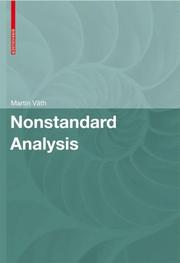| Listing 1 - 3 of 3 |
Sort by
|
Book
ISBN: 3038422657 Year: 2016 Publisher: Basel, Switzerland : MDPI,
Abstract | Keywords | Export | Availability | Bookmark
 Loading...
Loading...Choose an application
- Reference Manager
- EndNote
- RefWorks (Direct export to RefWorks)
The term zeolite is based on Greek words for "to boil" and "stone" and it is already known since more than 250 years. At that time, the Swedish mineralogist A.F. Cronstedt (1722-1765) observed the formation of large amount of steam when heating the material Stilbite pointing to his porous character and adsorption capacity. At present, over 200 different zeolite frameworks have been identified. In general, zeolites are crystalline aluminosilicates with defined micropore structure. Within zeolites, a good number of elements can be isomorphously incorporated and much more elements or their oxides can be hosted by zeolites. Besides their big variety in size of pore mouths, channels, crossings etc. leading also to their designation as molecular sieves and uses in membrane applications, zeolites reveal BrOnsted and Lewis acidic properties that can be varied in wide limits as well. Thus, they deserve the name "solid acids." Zeolites have an immense importance in diverse industrial applications as catalysts and adsorbents, for example in refinery industry, chemical industry, detergent sector or for solar thermal collectors and adsorption refrigeration In this special issue we aim at new developments and recent progress with respect to zeolite-catalyzed chemical reactions, adsorption applications and membrane uses as well as improved syntheses strategies and characterization techniques.
Zeolite catalysts. --- Catalysis. --- Activation (Chemistry) --- Chemistry, Physical and theoretical --- Surface chemistry --- Catalysts

ISBN: 3764377739 9783764377731 9780817677732 0817677739 9783764377748 3764377747 Year: 2007 Publisher: Basel : Birkhäuser Basel : Imprint: Birkhäuser,
Abstract | Keywords | Export | Availability | Bookmark
 Loading...
Loading...Choose an application
- Reference Manager
- EndNote
- RefWorks (Direct export to RefWorks)
Nonstandard analysis was originally developed by Robinson to rigorously justify infinitesimals like df and dx in expressions like df/dx in Leibniz' calculus or even to justify concepts like delta-`functions'. However, the approach is much more general and was soon extended by Henson, Luxemburg and others to a useful tool especially in more advanced analysis, topology, and functional analysis. The book is an introduction with emphasis on those more advanced applications in analysis which are hardly accessible by other methods. Examples of such topics are a deeper analysis of certain functionals like Hahn-Banach limits or of finitely additive measures: From the viewpoint of classical analysis these are strange objects whose mere existence is even hard to prove. From the viewpoint of nonstandard analysis, these are rather 'explicit' objects. Formally, nonstandard analysis is an application of model theory in analysis. However, the reader of the book is not expected to have any background in model theory; instead knowledge of calculus is required and, although the book is rather self-contained, background in more advanced analysis or (elementary) topology is useful.
Nonstandard mathematical analysis --- Applied Mathematics --- Engineering & Applied Sciences --- Nonstandard mathematical analysis. --- Model theory. --- Logic, Symbolic and mathematical --- Analysis, Nonstandard mathematical --- Mathematical analysis, Nonstandard --- Non-standard analysis --- Nonstandard analysis --- Model theory --- Global analysis (Mathematics). --- Analysis. --- Analysis, Global (Mathematics) --- Differential topology --- Functions of complex variables --- Geometry, Algebraic --- Mathematical analysis. --- Analysis (Mathematics). --- 517.1 Mathematical analysis --- Mathematical analysis
Book
Year: 2015 Publisher: Bielefeld : wbv Media,
Abstract | Keywords | Export | Availability | Bookmark
 Loading...
Loading...Choose an application
- Reference Manager
- EndNote
- RefWorks (Direct export to RefWorks)
"The study presents a cartographic overview of the offering of and demand for adult education in Germany. The authors have developed indicators from a variety of data sources, which allow an extensive and detailed view of the participation in adult education. With a view of the regions as reference frame, trend influences are developed and factors for adult education advantages and disadvantages are made visible. Some regions show abnormalities in the adult education behaviour. Results of regional case studies show that there are conductive as well as inhibiting factors for adult education opportunities. Here, the differences in adult education behaviour with regards to regionally varying levels and offers of further education become apparent."
| Listing 1 - 3 of 3 |
Sort by
|

 Search
Search Feedback
Feedback About UniCat
About UniCat  Help
Help News
News